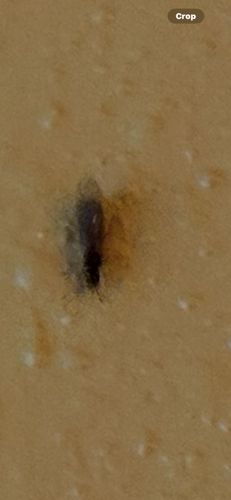Fungus Gnat
Scientific Name: Sciaridae (family)
Order & Family: Diptera (Order), Sciaridae (Family)
Size: 1/16 to 1/8 inch (2-4 mm)

Natural Habitat
Damp, organic-rich environments, such as potting soil of houseplants, greenhouses, compost piles, and decaying plant material.
Diet & Feeding
Larvae feed on fungi, decaying organic matter, and sometimes the roots of plants. Adult fungus gnats do not feed significantly and are primarily involved in reproduction.
Behavior Patterns
Adults are often seen flying or walking on the surface of potting mix. Larvae inhabit the top inch or two of soil. They have a short lifespan, typically about 7-10 days for adults, with the entire life cycle from egg to adult taking about 3-4 weeks under ideal conditions. They are attracted to light and moisture.
Risks & Benefits
Potential risks include damage to plant roots by larvae, especially in seedlings and young plants, leading to wilting and poor growth. They are primarily a nuisance pest in homes. Generally, they do not bite humans or transmit diseases. They can contribute to the decomposition of organic matter, but their presence in large numbers is often indicative of overly moist conditions for plants.
Identified on: 9/21/2025